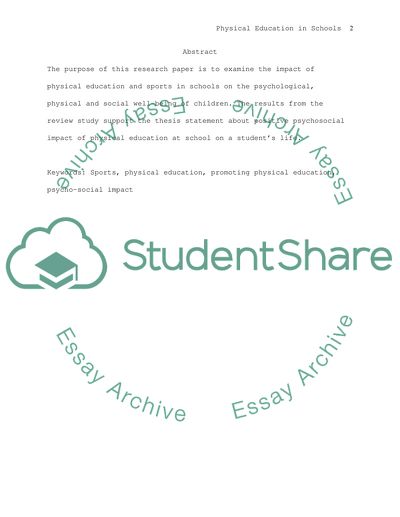Cite this document
(Psychosocial Effect of Physical Education Programs in Schools Term Paper, n.d.)
Psychosocial Effect of Physical Education Programs in Schools Term Paper. Retrieved from https://studentshare.org/education/1870300-does-playing-sports-have-a-positive-impact-on-success-in-school-and-work-and-does-it-teach-people-to-follow-social-rules-as-strive-for-success
Psychosocial Effect of Physical Education Programs in Schools Term Paper. Retrieved from https://studentshare.org/education/1870300-does-playing-sports-have-a-positive-impact-on-success-in-school-and-work-and-does-it-teach-people-to-follow-social-rules-as-strive-for-success
(Psychosocial Effect of Physical Education Programs in Schools Term Paper)
Psychosocial Effect of Physical Education Programs in Schools Term Paper. https://studentshare.org/education/1870300-does-playing-sports-have-a-positive-impact-on-success-in-school-and-work-and-does-it-teach-people-to-follow-social-rules-as-strive-for-success.
Psychosocial Effect of Physical Education Programs in Schools Term Paper. https://studentshare.org/education/1870300-does-playing-sports-have-a-positive-impact-on-success-in-school-and-work-and-does-it-teach-people-to-follow-social-rules-as-strive-for-success.
“Psychosocial Effect of Physical Education Programs in Schools Term Paper”, n.d. https://studentshare.org/education/1870300-does-playing-sports-have-a-positive-impact-on-success-in-school-and-work-and-does-it-teach-people-to-follow-social-rules-as-strive-for-success.


